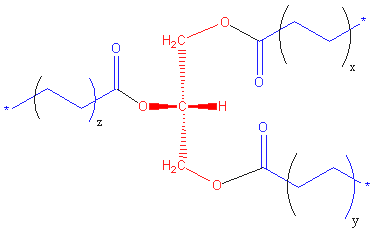Triglyceride physiology
 From Wikidoc - Reading time: 3 min
From Wikidoc - Reading time: 3 min
|
Triglyceride Microchapters |
|
Clinical Correlation |
|---|
|
Treatment |
|
Case Studies |
|
Triglyceride physiology On the Web |
|
American Roentgen Ray Society Images of Triglyceride physiology |
|
Risk calculators and risk factors for Triglyceride physiology |
Editor-In-Chief: C. Michael Gibson, M.S., M.D. [1]
Overview[edit | edit source]
Physiology[edit | edit source]
Metabolism[edit | edit source]
- See also fatty acid metabolism
| Function | Cardiac risk increase? | Apolipoprotein B on the surface[1]? | |
|---|---|---|---|
| Chylomicron | Transport dietary fatty acids and cholesterol from the intestine to liver | No, chylomicrons,are too large to enter the arterial wall | Yes |
| Very low density lipoprotein | Transport triglycerides from the liver | Yes | Yes |
|
Notes: Apolipoprotein B may best relate to cardiac risk reduction[1] | |||
Triglycerides, as major components of very low density lipoprotein (VLDL) and chylomicrons, play an important role in metabolism as energy sources and transporters of dietary fat. They contain more than twice as much energy (9 kcal/g) as carbohydrates and proteins. In the intestine, triglycerides are split into glycerol and fatty acids (this process is called lipolysis) (with the help of lipases and bile secretions), which are then moved into the cells lining the intestines (absorptive enterocytes). The triglycerides are rebuilt in the enterocytes from their fragments and packaged together with cholesterol and proteins to form chylomicrons. These are excreted from the cells and collected by the lymph system and transported to the large vessels near the heart before being mixed into the blood. Various tissues can capture the chylomicrons, releasing the triglycerides to be used as a source of energy. Fat and liver cells can synthesize and store triglycerides. When the body requires fatty acids as an energy source, the hormone glucagon signals the breakdown of the triglycerides by hormone-sensitive lipase to release free fatty acids. As the brain can not utilize fatty acids as an energy source, the glycerol component of triglycerides can be converted into glucose, via gluconeogenesis, for brain fuel when it is broken down. Fat cells may also be broken down for that reason, if the brain's needs ever outweigh the body's.
Triglycerides cannot pass through cell membranes freely. Special enzymes on the walls of blood vessels called lipoprotein lipases must breakdown triglycerides into fatty acids and glycerol. Fatty acids can then be taken up by cells via the fatty acid transporter (FAT).
References[edit | edit source]
- ↑ 1.0 1.1 Thanassoulis G, Williams K, Ye K, Brook R, Couture P, Lawler PR; et al. (2014). "Relations of change in plasma levels of LDL-C, non-HDL-C and apoB with risk reduction from statin therapy: a meta-analysis of randomized trials". J Am Heart Assoc. 3 (2): e000759. doi:10.1161/JAHA.113.000759. PMC 4187506. PMID 24732920.
 KSF
KSF